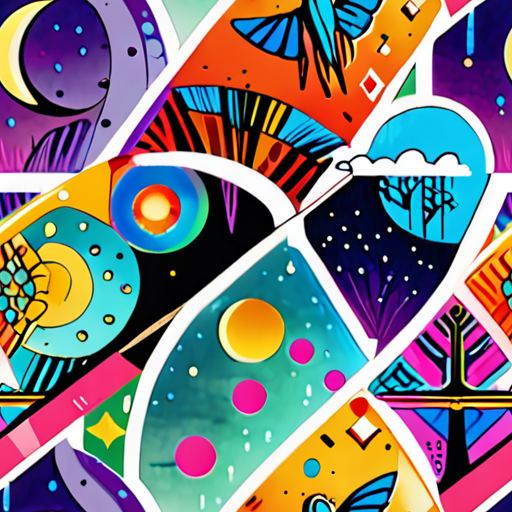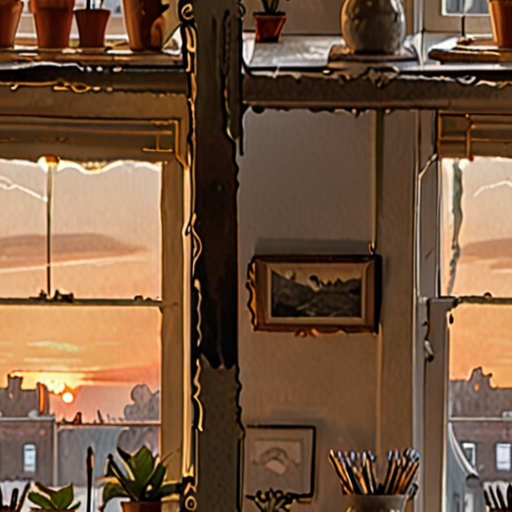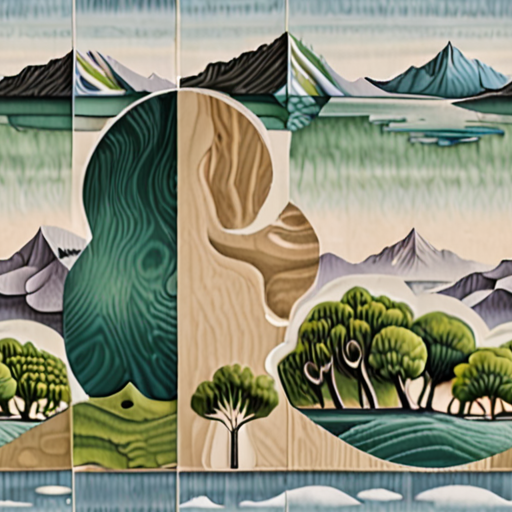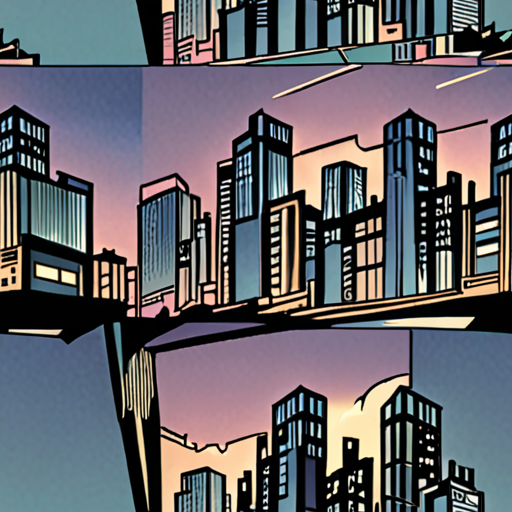For those who aspire to become skilled artists, understanding the intricacies of artistic techniques is crucial in unlocking one’s full creative potential. With numerous styles of art and diverse mediums available, it can be overwhelming to determine which techniques to master first. This comprehensive guide aims to provide a thorough overview of the fundamental principles of art, helping aspiring artists navigate the world of artistic techniques and discover their unique voice.

The 7 Fundamentals of Art
As an artist, understanding the fundamental principles of art is essential to creating visually appealing and effective pieces.
-
Line
A line is a continuous mark made on a surface by a drawing tool. Lines can vary in width, length, direction, and curvature, and are used to define shape, form, and movement in a composition.
-
Shape
A shape is a self-contained area with a defined boundary. Shapes can be geometric, such as squares and circles, or organic, such as free-form shapes found in nature.
-
Space
Space refers to the negative areas between and around objects in a composition. Space can be used to create a sense of depth, distance, and atmosphere in a piece.
-
Value
Value refers to the lightness or darkness of a color or object. Value can be used to create contrast, depth, and mood in a composition.
-
Form
Form refers to the three-dimensional qualities of an object or shape. Form can be created through the use of lines, shapes, and values.
-
Texture
Texture refers to the surface quality or “feel” of an object or material. Texture can be physical, such as rough or smooth, or visual, such as patterned or gradient.
-
Color
Color refers to the property of an object that is perceived by the eye as a result of the way it reflects or emits light. Color can be used to create mood, emotion, and harmony in a composition.
By mastering these fundamental principles of art, artists can create compositions that engage, inform, and inspire their audience.
Discovering Your Unique Art Technique
As an artist, finding your unique style can be a challenging yet rewarding journey.
- Dive into your creative process by experimenting with different mediums and techniques.
- Explore various art forms, such as painting, drawing, sculpture, or photography, to discover what resonates with you.
- Study the work of other artists, both past and present, to gain inspiration and understand different styles and techniques.
- Practice regularly to develop your skills and confidence in your abilities.
- Join online communities or local art groups to connect with fellow artists, share your work, and receive feedback.
At Artfull Journey , we believe that everyone has a unique artistic voice waiting to be discovered.
- Start by setting aside dedicated time for creativity and experimentation.
- Experiment with different materials and tools to find what works best for you.
- Pay attention to your emotions and intuition when creating – let your feelings guide your brushstrokes or strokes.
- Don’t be afraid to take risks and try new things – it’s often the unexpected moments that lead to breakthroughs.
- Keep an open mind and stay curious, always seeking out new knowledge and inspiration.
Remember, finding your unique art technique takes time, patience, and practice.
Embracing Your Authentic Voice
As you continue on your artistic journey, remember to stay true to yourself and your vision.
- Trust your instincts and don’t compare yourself to others – your uniqueness is what sets you apart.
- Stay focused on your goals and keep pushing forward, even when faced with challenges or self-doubt.
- Continuously learn and grow as an artist, staying up-to-date with the latest trends and techniques.
- Nurture your creativity by taking care of your physical and mental well-being.
- Share your art with others, whether through exhibitions, social media, or personal connections – it’s a great way to build confidence and community.
Staying Inspired and Motivated
As an artist, it’s essential to stay inspired and motivated to continue growing and evolving.
- Surround yourself with people who support and encourage your artistic endeavors.
- Seek out new experiences and environments to spark your creativity and broaden your horizons.
- Take breaks and give yourself time to rest and recharge – burnout can be detrimental to your artistic progress.
- Set realistic goals and deadlines for yourself, breaking down larger projects into manageable tasks.
- Celebrate your successes and accomplishments, no matter how small they may seem – every step forward is a victory.

The 7 Rules of Painting
As an artist, mastering the fundamentals of painting is essential to creating stunning works of art.
- Rule 1: Balance
- Types of balance: Symmetrical, asymmetrical, radial, and bilateral balance
- Techniques for achieving balance: Using color, shape, size, and placement of elements
- Rule 2: Emphasis
- Types of emphasis: Visual, spatial, and emotional emphasis
- Techniques for achieving emphasis: Color, size, placement, and texture
- Rule 3: Pattern
- Types of patterns: Geometric, organic, and abstract patterns
- Techniques for creating patterns: Repeating shapes, colors, and textures
- Rule 4: Unity
- Types of unity: Formal, spatial, and chromatic unity
- Techniques for achieving unity: Using color, shape, size, and placement of elements
- Rule 5: Movement
- Types of movement: Linear, curved, and diagonal movement
- Techniques for creating movement: Using line, shape, and color
- Rule 6: Contrast
- Types of contrast: Color, value, and texture contrast
- Techniques for creating contrast: Using color, value, and texture
- Rule 7: Rhythm
- Types of rhythm: Repetition, alternation, and progression
- Techniques for creating rhythm: Using line, shape, and color
Balance refers to the distribution of visual weight in a composition. A balanced painting features elements that are evenly distributed, creating harmony and stability.
Emphasis is the focal point of a composition, drawing the viewer’s attention to a particular element. Effective emphasis creates visual interest and guides the viewer’s eye through the painting.
Pattern refers to the repetition of shapes, colors, or textures in a composition. Patterns can create visual interest, unify elements, and guide the viewer’s eye.
Unity refers to the sense of wholeness and coherence in a composition. A unified painting features elements that work together to create a cohesive whole.
Movement refers to the dynamic energy and motion in a composition. Effective movement creates visual interest and engages the viewer.
Contrast refers to the difference between elements in a composition. Contrast creates visual interest, highlights important elements, and adds depth to a painting.
Rhythm refers to the repetition of elements in a composition, creating a sense of movement and energy. Effective rhythm engages the viewer and adds visual interest.
By mastering these 7 rules of painting, artists can create stunning works of art that engage and inspire viewers.

What are the 7 Major Art Forms?
The world of art encompasses a diverse array of creative expressions, each with its unique characteristics and mediums.
-
Painting
Painting is a timeless art form that has been a cornerstone of human expression for centuries. From the intricate brushstrokes of Renaissance masters to the bold, abstract works of modern artists, painting continues to captivate audiences worldwide.
-
Sculpture
Sculpture is a three-dimensional art form that pushes the boundaries of creativity and imagination. Whether carved from stone, molded from clay, or constructed from metal, sculpture adds texture and depth to our understanding of the world around us.
-
Music
Music is a universal language that transcends cultural and geographical barriers. With its rich history and diverse genres, music has the power to evoke emotions, spark memories, and bring people together in ways that few other art forms can.
-
Dance
Dance is a dynamic and expressive art form that combines movement, rhythm, and emotion to convey meaning and tell stories. From classical ballet to contemporary hip-hop, dance continues to evolve and captivate audiences of all ages.
-
Theater
Theater is a live performance art form that brings characters, stories, and themes to life on stage. With its ability to transport us to new worlds, challenge our perspectives, and connect us with others, theater remains a powerful medium for self-expression and social commentary.
-
Cinema
Cinema is a relatively modern art form that has revolutionized the way we consume and interact with moving images. From classic Hollywood blockbusters to independent films and documentaries, cinema continues to push the boundaries of storytelling and visual innovation.
-
Literature
Literature is a written art form that has been a cornerstone of human communication for millennia. With its ability to transport us to new worlds, explore complex ideas, and capture the human experience, literature remains a vital part of our shared cultural heritage.
The Four General Art Styles
As an artist, understanding the different art styles can help you develop your unique voice and style.
- Realism
- Leonardo da Vinci
- Raphael
- Caravaggio
- Impressionism
- Claude Monet
- Pierre-Auguste Renoir
- Camille Pissarro
- Expressionism
- Edvard Munch
- Emil Nolde
- Ernst Ludwig Kirchner
- Abstract Art
- Wassily Kandinsky
- Kazimir Malevich
- Jackson Pollock
Realism is an art style that focuses on accurately depicting reality. Realistic paintings often feature everyday subjects, such as landscapes, still lifes, and portraits, rendered in precise detail.
Artists who specialize in realism strive to capture the subtleties of light and shadow, texture, and color to create a sense of authenticity.
Some notable realist artists include:
You can learn more about realism and its techniques on our painting page .
Impressionism is an art style that emphasizes capturing the fleeting moments of modern life. Impressionist paintings often feature soft, blurred brushstrokes and vivid colors to convey a sense of movement and energy.
Impressionist artists sought to break away from traditional approaches to painting and explore new ways of expressing themselves.
Some notable impressionist artists include:
For more information on impressionism and its techniques, visit our impressionism page .
Expressionism is an art style that emphasizes the artist’s emotional and psychological state. Expressionist paintings often feature distorted forms, vibrant colors, and exaggerated emotions to convey a sense of intensity and drama.
Expressionist artists sought to express their inner experiences and feelings through their work.
Some notable expressionist artists include:
Learn more about expressionism and its techniques on our expressionism page .
Abstract art is a style that rejects representation and focuses on non-representational forms and colors. Abstract paintings often feature geometric shapes, patterns, and textures to create a sense of visual interest and emotion.
Abstract artists seek to explore the possibilities of color, shape, and composition to create a unique visual language.
Some notable abstract artists include:
Discover more about abstract art and its techniques on our sculpture page .

The Ninth Art
In France, art historians have long debated and recognized the graphic style as the Ninth Art, a category that ranks alongside poetry, architecture, painting, and sculpture.
- This classification acknowledges the significance and impact of comic drawings, which have been a part of French culture for centuries.
- My first exposure to bande dessinée, or drawn strips, was at the Place De Herbes exhibition, where I witnessed firsthand the beauty and storytelling potential of this unique art form.
Understanding the Ninth Art
The term “Ninth Art” was coined to describe the distinct characteristics and contributions of comic drawing to the world of art.
- Comic drawings offer a unique blend of visual storytelling, humor, and emotional resonance, making them a beloved part of popular culture.
- As a medium, bande dessinée has evolved significantly over the years, incorporating various styles, genres, and themes to captivate audiences worldwide.
Exploring the World of Comic Drawings
At Artfull Journey, we celebrate the diversity and creativity of comic drawings, offering a platform for artists and enthusiasts to share their passion and knowledge.
- We feature articles, resources, and insights on various aspects of comic art, from technique and inspiration to cultural significance and historical context.
- Our community-driven approach allows readers to engage with fellow fans, learn from experts, and discover new talents in the field.
Conclusion
The Ninth Art represents a rich and vibrant aspect of human expression, offering a unique window into the world of comic drawings and their enduring appeal.
By embracing this art form and its many facets, we can deepen our understanding of the power of storytelling, the importance of creativity, and the boundless potential of the human imagination.

0 Comments